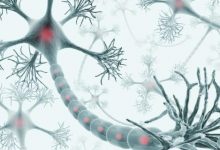panic attack while driving + video
Panic attack while driving can be a terrifying experience for many people. A panic attack is a sudden and intense episode of anxiety that can cause physical and emotional symptoms, such as sweating, shaking, shortness of breath, and a racing heartbeat. For some people, the experience of having a panic attack while driving can be so overwhelming that it can make them avoid driving altogether. In this essay, we will explore the causes of panic attacks while driving, the impact of panic attacks on driving, and strategies for managing and coping with panic attacks while driving.
If You Get Panic Attacks While Driving…WATCH THIS! :
panic attack while drivingThe causes of panic attacks while driving can be complex and varied. For some people, the experience of being in a confined space, such as a car, can trigger a panic attack. Additionally, the stress and pressure of driving, such as navigating traffic and being responsible for the safety of others, can also contribute to panic attacks while driving. For others, panic attacks while driving may be related to underlying mental health conditions, such as anxiety disorders or phobias.

The impact of panic attacks while driving can be significant and far-reaching. Panic attacks can make it difficult for people to drive safely and with confidence, leading to decreased independence and mobility. Additionally, panic attacks while driving can increase the risk of accidents, as people may be unable to focus or react quickly while driving. Furthermore, panic attacks while driving can also impact a person’s overall quality of life, leading to decreased self-esteem and increased feelings of stress and frustration.
To help manage and cope with panic attacks while driving, it is important to seek the help of a mental health professional, such as a psychologist or counselor. Therapy can help individuals identify and address the underlying causes of their panic attacks, and provide them with the tools and strategies necessary to manage their anxiety while driving. Additionally, medication, such as Anxiolytic medication, may be prescribed to help manage the symptoms of panic attacks.
In addition to seeking professional help, there are several strategies that people can use to manage and cope with panic attacks while driving, including:
- Gradual exposure: Gradually exposing oneself to driving can help build confidence and reduce anxiety while driving. This can be done by starting with short trips and gradually increasing the length and complexity of trips.
- Mindfulness and relaxation techniques: Mindfulness and relaxation techniques, such as deep breathing and meditation, can help reduce anxiety and stress levels, and make driving a more positive experience.
- Exercise: Regular exercise can help reduce stress and anxiety levels, as well as improve overall physical and mental health.
- Positive self-talk: Encouraging positive self-talk and focusing on strengths and accomplishments can help boost self-esteem and reduce anxiety while driving.
- Seek support from loved ones: Having the support of loved ones can provide a sense of comfort and help reduce anxiety while driving.
- Avoid caffeine and sugar: Excessive caffeine and sugar intake can increase anxiety levels, so it is important for people to limit their consumption of these substances.
- Create a calming driving environment: People can create a calming driving environment by playing soothing music, using essential oils, or keeping the car clean and organized.
It is important to remember that everyone experiences panic attacks differently, and what works for one person may not work for another. However, by seeking professional help, using effective coping mechanisms, and creating a supportive environment, people can learn to manage and cope with panic attacks while driving and lead fulfilling and productive lives.
In conclusion, panic attacks while driving can be a terrifying and debilitating experience for many people. By being aware of the causes of panic attacks, the impact of panic attacks on driving, and effective strategies for managing and coping with panic attacks, people can take steps towards reducing the frequency and intensity of panic attacks while driving. Seeking professional help and using effective coping mechanisms can help individuals regain control over their driving experience and improve their overall quality of life.
It is important for people who experience panic attacks while driving to understand that they are not alone and that there is help available. With the right support and resources, people can overcome their anxiety and lead safe, confident, and fulfilling lives on the road.


